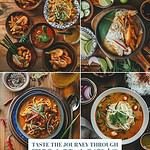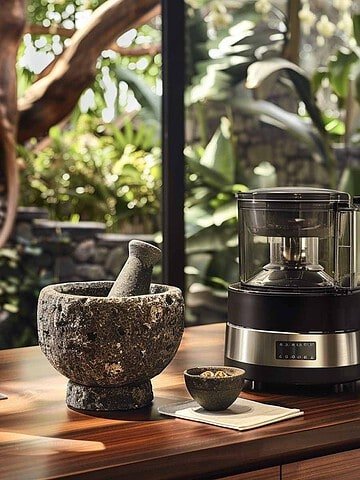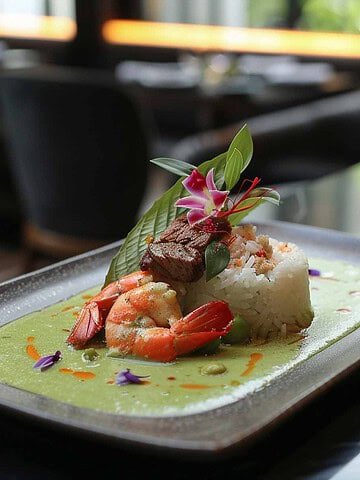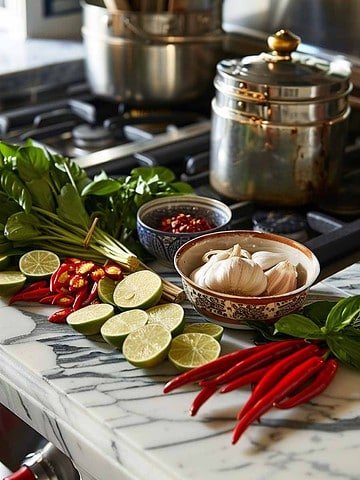
Thailand is known for its vibrant culture and rich history. The country's culinary landscape is as diverse as its geography. Thailand has a wide range of flavors, ingredients, and culinary techniques. From the busy streets of Bangkok to the peaceful shores of the Andaman Sea, each region offers a unique culinary experience.Join us on a journey through Thailand's culinary regions, where we'll explore the unique and iconic dishes that define each area's gastronomic identity.
1. Northern Thailand: The Kingdom's Gastronomic Heartland
Northern Thai Cuisine Overview:
Northern Thailand, with its mountainous terrain and cooler climate, is known for its distinct culinary traditions influenced by neighboring Myanmar, Laos, and China. The cuisine here features bold flavors, aromatic herbs, and a preference for sticky rice over jasmine rice.
Iconic Dishes:
Khao Soi, for instance, is not just a dish but a symbol of Northern Thai hospitality and warmth. It is often served to guests as a sign of respect and friendship. - Khao Soi: A comforting dish of egg noodles in a coconut curry broth, topped with crispy noodles and served with pickled mustard greens, shallots, and lime.
- Nam Prik Noom: A spicy dip made from roasted green chilies, garlic, shallots, and tomatoes, traditionally served with fresh vegetables.
- Gaeng Hanglay: A mild, aromatic pork curry influenced by Burmese flavors, featuring tender pork simmered in a fragrant blend of spices and tamarind.
Key Ingredients:
- Turmeric: Used generously in curries and stir-fries, lending a vibrant yellow hue and earthy flavor.
- Ginger and Galangal: Aromatic roots used to add depth to soups and curries.
- Lanna Sauces: Unique dipping sauces made from fermented fish or shrimp paste, chili, and lime.
2. Northeastern Thailand (Isaan): Spicy and Savory Delights
Isaan Cuisine Overview:
Isaan cuisine, also known as Northeastern Thai cuisine, reflects the region's agricultural roots and hot, arid climate. Known for its bold, fiery flavors and use of sticky rice, Isaan food is often enjoyed with local beers and accompanied by lively folk music.
Iconic Dishes:
- Som Tum (Green Papaya Salad): A refreshing salad of shredded green papaya, tomatoes, peanuts, and chilies, dressed with lime juice, fish sauce, and palm sugar.
- Laab (Spicy Minced Meat Salad): A zesty salad of minced meat (often pork or chicken) flavored with roasted rice powder, lime juice, fish sauce, and fresh herbs.
- Gai Yang: Grilled chicken, marinated in a mix of garlic, cilantro roots, and black pepper, served with sticky rice and a spicy dipping sauce.
Key Ingredients:
Bird's Eye Chilies:** Small but potent chilies that provide Isaan dishes with their characteristic heat.
- Padaek: Fermented fish sauce used to season and enhance the flavors of salads and grilled meats.
- Dill: Unlike other Thai cuisines, dill is a common herb used in Isaan cooking, adding a unique aromatic touch.
3. Central Thailand: The Heart of Thai Cuisine
Central Thai Cuisine Overview:
As Thailand's political and cultural center, the cuisine of Central Thailand, particularly Bangkok, is highly influential and often considered the standard for Thai food outside the country. Using various ingredients, it balances sweet, sour, salty, and spicy flavors with finesse.
Iconic Dishes:
- Pad Thai: Stir-fried rice noodles with eggs, tofu, shrimp, or chicken, flavored with tamarind paste, fish sauce, and palm sugar, garnished with peanuts and lime.
- Tom Yum Goong: A hot and sour soup made with shrimp, lemongrass, kaffir lime leaves, galangal, mushrooms, and chilies, seasoned with fish sauce and lime juice.
- Massaman Curry:This is a rich and flavorful curry with Persian origins. It includes tender pieces of meat, often beef or chicken, along with potatoes and roasted peanuts in a creamy coconut milk sauce.
Key Ingredients:
- Thai Basil: Adds a sweet and peppery flavor to stir-fries and curries.
- Kaffir Lime Leaves: Aromatic leaves used to impart citrusy notes to soups and curries.
- Palm Sugar: Natural sweetener used in sauces, marinades, and desserts.
4. Southern Thailand: Spice and Seafood Galore
Southern Thai Cuisine Overview:
Southern Thailand's cuisine is characterized by its spiciness, influenced by Malay and Indian flavors. Due to its coastal location, it uses fresh seafood abundantly. Coconut milk is prominently featured in many dishes, adding richness and depth.
Iconic Dishes:
- Gaeng Som: A tangy and spicy soup made with fish or shrimp, flavored with turmeric, lemongrass, and tamarind paste.
- Hoi Tod: Crispy Thai-style omelet with fresh mussels or oysters, flavored with garlic, chilies, and bean sprouts, served with a sweet and sour dipping sauce.
- Khao Mok Gai: Southern Thai-style biryani rice with tender chicken marinated in turmeric and spices, served with a flavorful broth and a side of pickles.
Key Ingredients:
- Fresh Turmeric: Used in curries and soups, imparting a vibrant color and earthy flavor.
- Tamarind Paste: Provides a tangy sourness to soups and curries, balancing the spiciness.
- Fish Sauce: Essential for seasoning seafood dishes and enhancing umami flavors.
5. Eastern Thailand: Coastal Treasures
Eastern Thai Cuisine Overview:
Eastern Thailand, encompassing provinces like Chonburi and Rayong, celebrates the sea's bounty with its fresh seafood dishes. Influenced by neighboring Cambodia, this region's cuisine is known for its subtle sweetness and use of fresh herbs.
Iconic Dishes:
- Pla Kapong Neung Manao: Steamed sea bass flavored with lime juice, garlic, and chilies, served with a dipping sauce made of fish sauce, lime juice, and chopped chilies.
- Yam Talay (Seafood Salad): A refreshing salad of mixed seafood (squid, shrimp, mussels) tossed with onions, tomatoes, celery, and cilantro, dressed with lime juice and fish sauce.
- Pad Cha Talay: Stir-fried seafood (usually mixed varieties) with Thai herbs such as holy basil, fingerroot, and kaffir lime leaves, seasoned with soy sauce and chili paste.
Key Ingredients:
- Fingerroot: Aromatic rhizome used in curries and stir-fries for its subtle peppery flavor.
- Holy Basil: Adds a peppery, slightly spicy flavor to stir-fries and seafood dishes.
- Coconut Cream: Thicker and richer than coconut milk, used to add creaminess to curries and soups.
Exploring Thai Cuisine: A Culinary Adventure
Exploring Thailand's culinary regions reveals a variety of flavors and ingredients and the cultural and historical influences that shape each dish. Whether indulging in the fiery heat of Isaan cuisine, savoring the rich curries of the south, or enjoying the intricate balance of flavors in central Thai dishes, each region offers a unique gastronomic experience.
From Bangkok's bustling markets to the tranquil fishing villages of the Andaman coast, Thailand's culinary diversity reflects its status as a cultural crossroads in Southeast Asia. If you're someone who loves to travel or enjoys exploring Thai cuisine, each dish shares a story of tradition, innovation, and the lively culture of Thailand.
Conclusion: Embracing Thailand's Culinary Mosaic
In conclusion, Thailand's culinary regions offer a kaleidoscope of ingrediants, flavors, and cooking techniques that reflect the country's rich cultural tapestry. Each region contributes to Thailand's culinary mosaic from the northern hills to the southern shores, inviting you to embark on a sensory journey like no other.
Whether you're drawn to the bold spices of Isaan, the refined flavors of central Thai cuisine, or the seafood delights of the south, Thai food promises an unforgettable dining experience that celebrates tradition and innovation in equal measure. So, grab your chopsticks and embark on a culinary adventure through Thailand's diverse and delicious regional cuisines!






Leave a Reply